Se Habla Español
Children’s Dermatology is led by Board-Certified Dermatologist and Pediatric Dermatologist Dr. Heidi Goodarzi serving patients throughout Orange County.
Dr. Heidi specializes in Pediatric Dermatology.
Dr. Heidi believes that it is very important that babies’ birthmarks and moles get evaluated by a dermatologist, that children’s eczema gets treated as skin disease and not as an “allergy”, and that teenagers’ acne gets medically managed so that they are not left with scars on their beautiful faces or souls!
Below are some of the common childhood skin conditions.
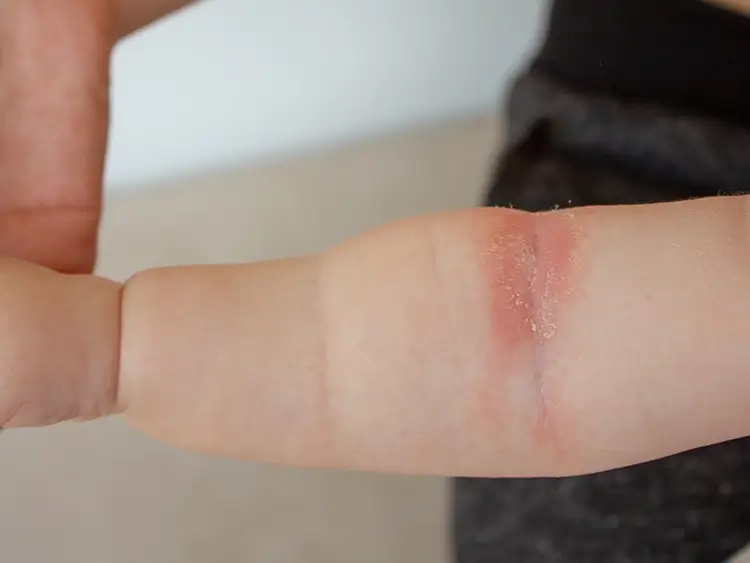
A common, long-term skin condition that causes rash & significant itchiness, at times interfering with growth & well-being of a child. Many effective &safe medical treatments are available.
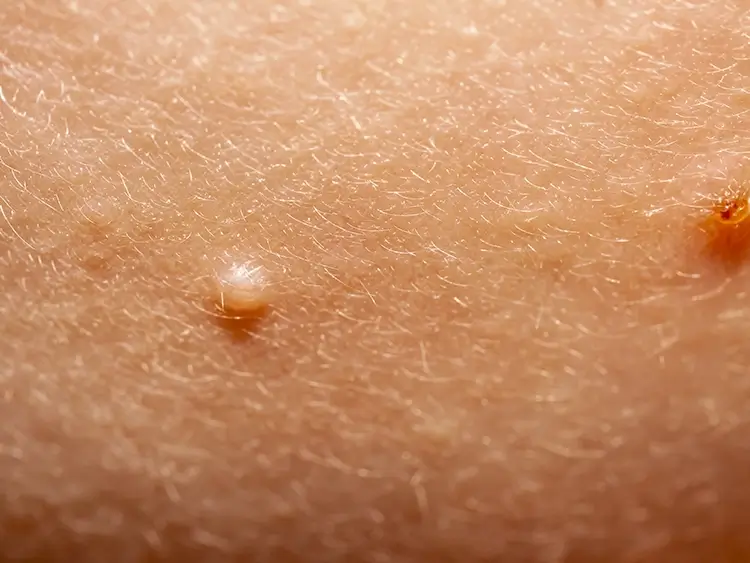

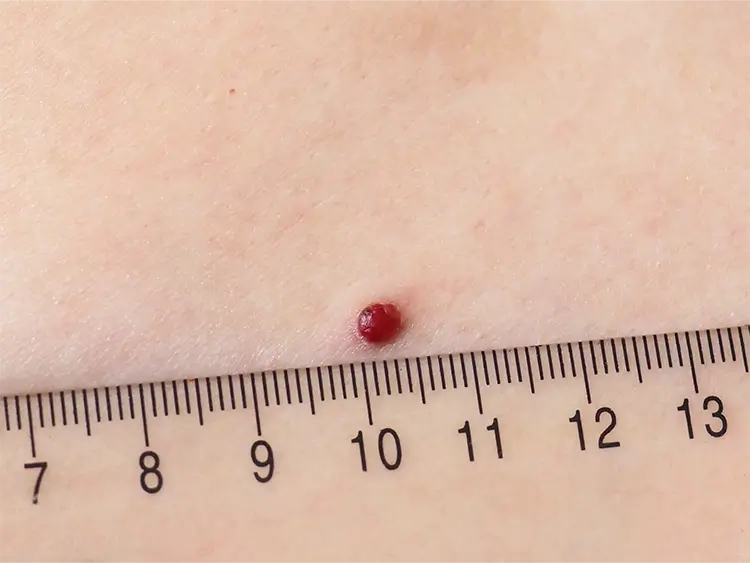
Scary but harmless red bump of small blood vessels that grow very quickly and often bleeds
(a lot) when bumped or scratched. Best treatment is to remove the lesion and cauterize the base of it.
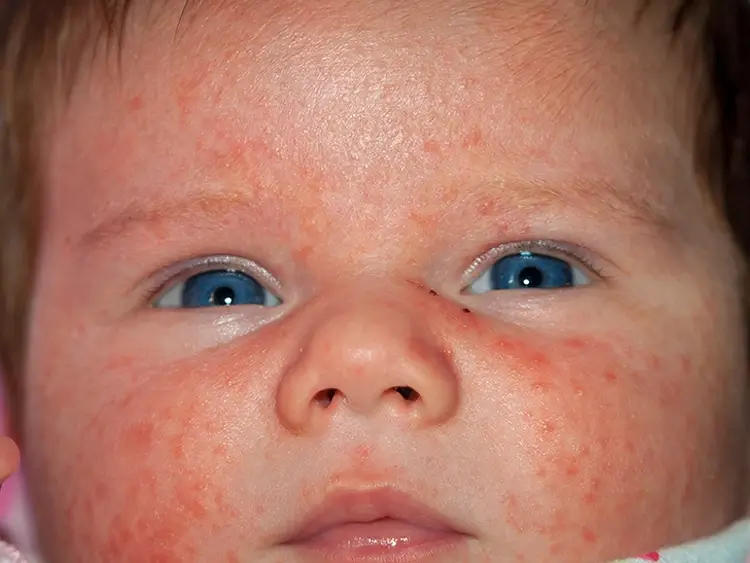
Neonatal acne appears in the first 3 months of life on the face and resolves on its own.
Infantile acne develops later and may last until age 2, causing comedones and possibly scarring. Treatment may be necessary.
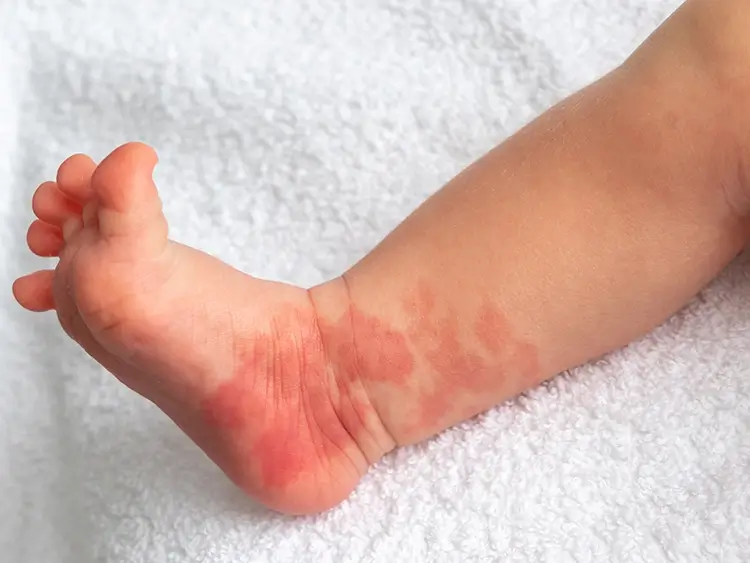
Infantile hemangiomas are clusters of additional blood vessels in the skin. They are non-cancerous growths that usually develop within the first few weeks of life. They must be evaluated- and evaluated early on- to determine if medical treatment is necessary.

Moles or Nevi are common skin growths that may be present at birth or develop later in life. While mostly harmless, any mole with changes in size, shape, or color, or new development of irritation, itchiness or bleeding needs to be evaluated.

Congenital melanocytic nevi (CMN) are moles present at birth, caused by extra pigment cells forming before birth. They vary in size, color, and texture, and grow with the child. Their risk of developing melanoma is determined based on their size.
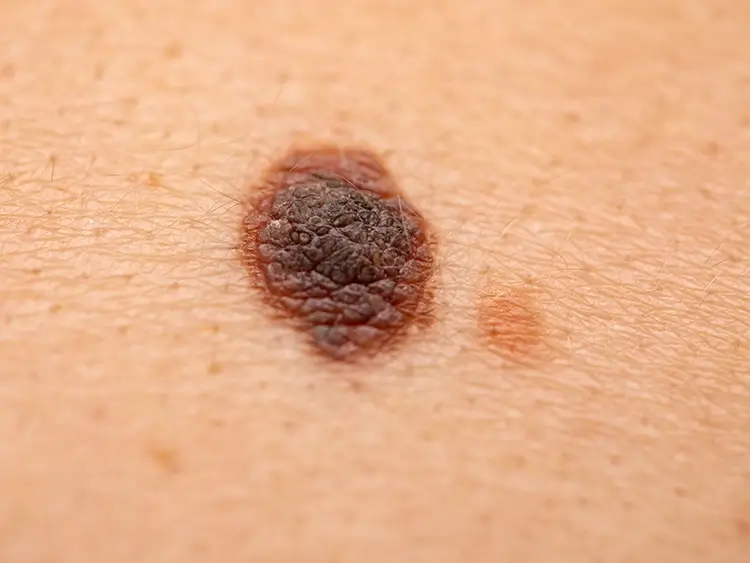
This is a common birthmark (or can develop in early childhood) that is different from regular moles. They are linear with a different skin texture, flat or raised, pink, brown, or black, and may thicken, roughen, or darken over time.

Melanoma (“cancer of the mole”) is a deadly skin cancer that requires early detection. Although rare in children, it is more common in children with many moles (50-100) or with a family history of melanoma.
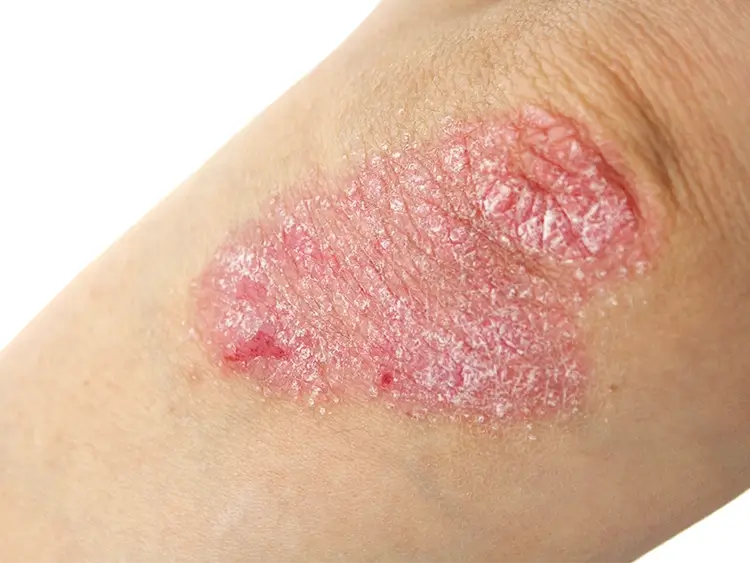
Psoriasis is a chronic skin condition affecting 1-2% of people, marked by red plaques with thick scales. It can develop at any age, often before 20, and varies in severity. There is no cure, but treatments are available based on its location and severity.
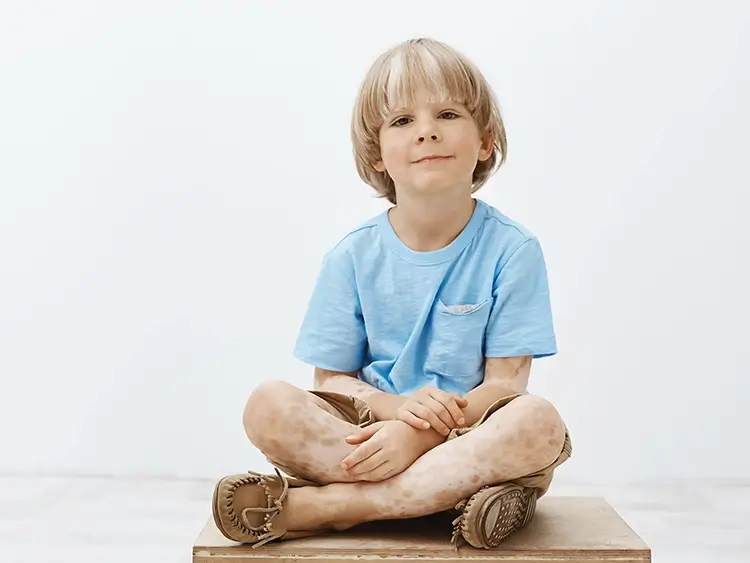
A condition where the skin loses pigment, causing white patches. It is caused by the immune system attacking pigment cells. Vitiligo is not contagious. Many new effective treatment options are available.
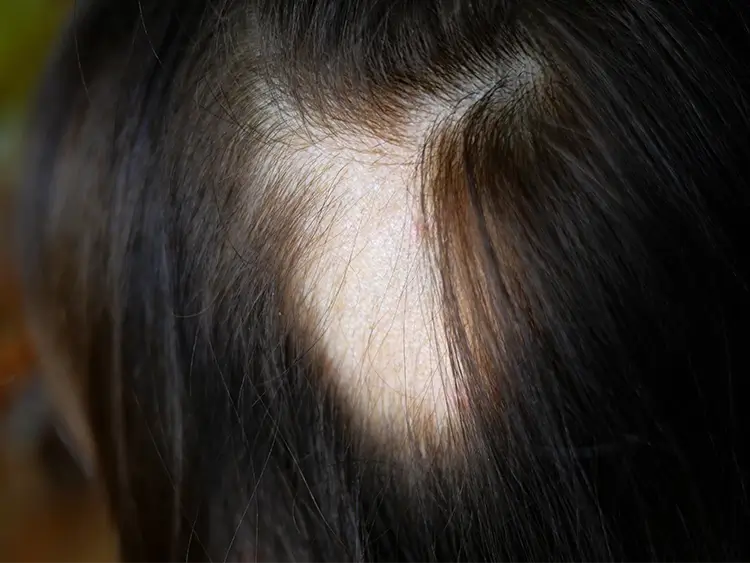
Hair Loss caused by the immune system mistakenly attacking the hair follicles. Hair falls out in round patches, mostly on the scalp. Although extremely concerning to the child & parents, and has unpredictable flares, it is almost always treatable.


Staphylococcus aureus (“Staph”) and Streptococcus pyogenes (“Strep”) are the primary bacteria responsible for most skin infections, including impetigo, folliculitis, furuncles, abscesses, and cellulitis.

Tinea is a fungal infection that affects the skin, hair, or nails. On the skin, particularly on the body and face, it often forms a red, scaly, ring-like pattern, sometimes referred to as “ringworm”. On the scalp they cause rash and hair loss and in nails they form nail changes. Fungal infections always need medical treatment.

Red, bumpy, itchy, and sometimes blistered skin. It has 2 types:
Irritant Contact Dermatitis that can affect anyone’s skin when exposed to irritants, like acids, soaps, or cold weather.
Allergic Contact Dermatitis only affects those with a specific allergy.
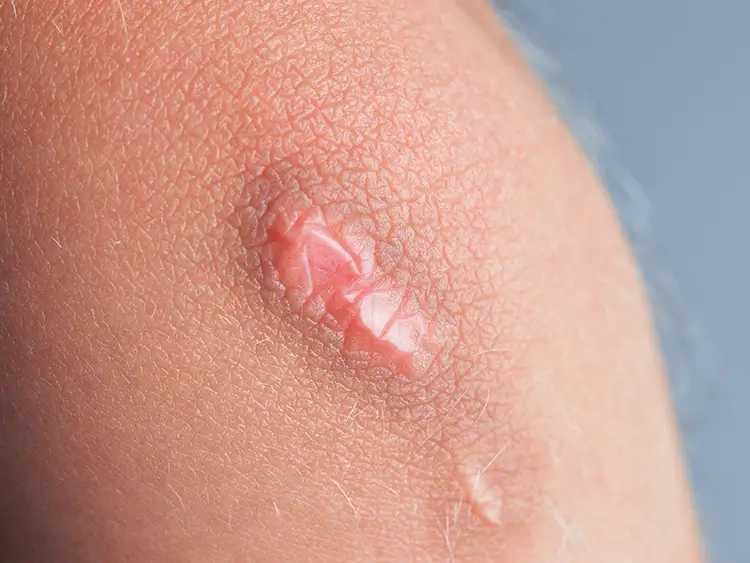
Scars form as part of the skin’s healing process after injury, surgery, or infection. They are a replacement tissue for skin, and not skin. They can be flat, raised, or indented and vary in color. Hypertrophic scars are raised but stay within the injury’s limit. Keloid scars extend beyond the edges of the injury. Treatments vary.
Trust #doctors ! 🙏🏼❤️ #eczema #pediatricdermatology #atopicdermatitis #allergy #pediatricdermatologist #dermatologist

Do you know a redhead? I’ll stay all day and all night to teach a redhead child apply sunscreen properly ❤️
Redheads typically have mutations in the MC1R (melanocortin 1 receptor) gene. This mutation leads to the production of pheomelanin instead of eumelanin, resulting in red hair, fair skin, and increased sensitivity to UV radiation.
As gorgeous as they are, unfortunately they have increased risk of melanoma (even independent of their sun exposure), and increased risk of non-melanoma skin cancers such as basal cell carcinomas and squamous cell carcinomas.
If you know a redhead please send this to them and encourage them to go see a dermatologist!
And for males, just get together and put sunscreen on them - it’s a team sport 😂😂
#pediatricdermatologist #redheads #sunscreen #skincancer

Food Allergy = when your child develops HIVES (or vomits) 30 minutes to 6 hours after ingestion of a food. These HIVES are raised, swollen, pink, and soft rashes. Antihistamines such as @zyrtecallergy are first line of treatment.
Eczema = DRY, ROUGH, SCALY RASH. It is a chronic skin condition and antihistamines do not resolve them.
📣 Food Allergy does NOT cause Eczema.
#eczema #pediatricdermatologist #pediatricdermatology #pediatrics #atopicdermatitis #foodallergy #antihistamine

iPad 📱
+
A hug from Spider-Man 🕸️
+
A lollipop 🍭
is all you need to avoid general anesthesia and do your skin surgery in our office ❤️🙏🏼
If your child has a SKIN lesion, you don’t need plastic surgery or general anesthesia or operating room- see a pediatric dermatologist and discuss office procedures.
Follow for more tips @pediatricdermatology
Call for appointments 949 679 1990
#pediatricdermatology #pediatricdermatologist #plasticsurgeon #dermatologist #pediatrics

#measles is no joke!
Where there was no vaccine for it a lot of people died. Please vaccinate your children 🙏🏼🩵
#vaccines #ᴠᴀᴄᴄɪɴᴇssᴀᴠᴇʟɪᴠᴇs #measlerash #pediatricdermatology #pediatricdermatologist #rashinkids

One of the most notorious places for scarring after skin surgery? Chest area, specially in women.
So when this teenager asked me to remove this mole, I tried really hard to convince her not to do it. But as many conservatives with this age group goes:
Teenager 1, Dr. Heidi -0-
So when I did this procedure, instead of a regular football shaped🏈excision which would’ve left her with a scar three times as long as the original mole, I decided to do a purse string closure 👛 : This is when you cut the lesion in a circular fashion, and you put in a purse string suture and pull on it to create a small round scar (see next slide). This results in a scar smaller than the original mole itself 🤩
I was very happy with the results at her one week follow up. The scar will continue to fade in color over months and look better. So this California girl can continue to wear her itty bitty bikini 👙
#moleremoval #molesurgery #scartreatment #scar #dermatology #pediatricdermatologist #californiagirl

Copyright© 2025 Heidi Goodarzi MD Inc | Privacy Policy | Accessiblity